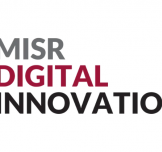أنت هنا
Digital transformation- the need to transform for innovation in the future

Business digital transformation, it can certainly get your pulse racing as you start looking for the nearest exit. Digital transformation is being asked of everybody to get involved in but do we have a sufficient understanding of it?
So what is a digital transformation?
We needed to step back and ask, what is truly transformational? Scott Anthony, the MD of Innosight wrote recently on this: “What do you really mean by business transformation”. He broke down the fundamental different categories of the effort put in to achieve some ‘sort’ of transformation.
The first is operational or doing what you are currently doing, better, faster or cheaper.
The second category focuses on the operational model, doing ‘things’ in a fundamentally different way
His final one has the most promise and peril, that is strategic. This is as he puts it transformation with a big capital “T” because it involves changing the very essence of a company.
We should link up digital transformation into its business purpose.
Undergoing any transformation must be for a reason (well hopefully) as it does incur a lot of pain before you get to the gain. Moving closer to our innovation need we can see digital transformation everywhere, it is actually all around us. The customer today feels a growing empowerment, in choice in personalization, in knowing the products or service they are buying are meeting their needs and these are becoming increasingly intelligent to meet these needs.
Companies need to increasingly interact with customers, as close or actually in real-time to learn, adapt and deliver to the needs. This requires a company to become far more ‘highly automated and adaptive’.
To get to this transforming point we need to build in a faster adaptation of business strategies and turn out faster innovation outcomes that meet these needs as key to this. Our transformation journey needs to embrace the cloud, mobile, data and networks and relies on higher levels of analytics to interpret and translate information, into insights, into ideas, into innovation that delivers on the ‘needs’ the customer wants solutions too.
Now that really does become transforming.
There is a rub here, most transformation projects seem to fail.
McKinsey in 2011 identified that 72% of transformation programs fail to deliver on their targets so there is an awful lot of thinking, planning and working through any transformation to make sure you end up with the 28% of the success stories.
So we recognise digital transformation needs to lead somewhere, well it is really most likely to fundamentally alter your (innovation) business model.
I like this as a definition to tighten down digital but it opens us up to the darker side of digital transformation, the risk of digital disruption. They don’t necessarily go hand in hand as most advisors want you to believe as your pathway to becoming the ‘great disruptors’ but taking the global centre for business transformation at IMD and offering this definition it gives us more of a handle on where digital transformation will end up.
“Digital disruption is the impact of digital technologies and business models on a company’s value proposition and market position. Digital business transformation is an organisational change journey to adopt digital technologies and business models to improve performance. It involves challenging the assumptions that have underpinned prior success and stress-testing the ways in which companies deliver value to customers. It means changing the organisation itself, including its operations, culture, revenue model, and more”
We need to recognise digital does transform; it means lots (and lots of change) to get innovation repositioned. We need to ask can this lead to disruption, ours and others for competitive advantage?
Digital transformation is not just investing in more technology or making available the processes online, in the cloud or through mobile apps. That breed of digitalizing is nothing new, most have moved part way to this. We are talking here about:
“Digital transformation meaning nothing less than making strategic and comprehensive process and structure changes, throughout the business, using new, customer-oriented approaches. Ones that are so focused on the customer centric part, as this delivers the direction (of focus) and then the pathway towards enablement that moves you to the final innovation delivery. Innovation that meets and even exceeds the customer need as identified, through these digital insights”
Only then is an organisation truly transforming into a top competitor for the new era for innovation delivery. This means processes, IT, change management, training and lots of it and having a clearly defined program.
So we come back to “why the pain?”
On the whole, digital transformation both increases revenue and decreases costs and inevitably your management will want to go there.
The upside for achieving greater growth and revenue comes from the experience of greater customer engagement. If you broaden out your multiple channels, you achieve a greater number of touch points. The more customers make use of multiple channels it is estimated can provide three times more valuable than pursuing that traditional single channel. As you chase for engagement, you seek customer experiences and this leads you to expect and look for growing market share.
The lowering of costs comes down the road, as you pilot through any digital transformation journey as you go closer to a platform unification and optimisation of staff, and technology as you gain from that invested dollar in insights, information, data and analysis if you have deployed your strategy to raise collaboration and productivity. The multiple dollar questions are how do you set about doing this?
More information, greater personalization is both unpredictable in what it yields and is an ongoing process. It never finishes because the point of digital transformation is to continually adapt, to knowledge flowing in as customer needs continually change and your job is to keep up and deliver on them.

































































موقع إبداع مصر غير مسؤول عن مضمون التعليقات